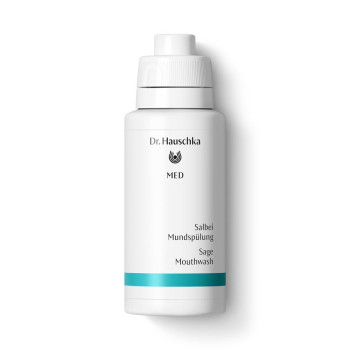
Tormentil
Synonyms: Biscuits, Bloodroot, Earthbank, English Sarsaparilla, Ewe Daisy, Flesh and Blood, Septfoil, Shepherd's Knapperty, Shepherd's Knot, Thormantle, Tormentilla
Scientific Name: Potentilla officinalis
Family: Rosaceae (Rose Family)
Habitat
Central and Northern Europe, the mountains of North Africa
Constituents
Rootstock: up to 25% tannins (catechin tannins, gallotannins and ellagitannins)
Description
Golden yellow flowers with an orange centre and four heart-shaped petals hover on thin stalks above digitate leaves. A rose? Well, a member of the rose family at any rate, although most such members have five petals on their flowers. The first time it blossoms each year, tormentil sometimes reveals its full rose appearance. The one-centimetre flowers produced at this time are the only ones to have five petals. The tormentil that blossoms from May to October produces long shoots measuring 10 to 40 centimetres, which creep along the ground, almost forming a cushion, or grow taller and more unkemptly, with the stems falling across each other. Thanks to elaiosomes (fatty treats for ants), the nutlets that ripen in the centre of the petals are spread widely.
The rootstock contrasts starkly with the more filigree-looking plant. Also known as the rhizome, this part of the plant comprises the long stems that stretch out underground. The rootstock is impressively thick and grows horizontally in a powerful and irregular manner. In spring, several sun-thirsty tormentil stems sprout from the rootstock and reach for the light. The yellowish-white rootstock turns an intense red colour once it has been cut and has a herbal, rose-like fragrance.
Interesting Facts
The scientific name Potentilla officinalis essentially means the powerful one with healing abilities. This is derived from the Latin word potentia = power and the affix officinale, which is often used for medicinal plants and comes from the Latin officina = pharmacy or laboratory. The affix in the alternative scientific name Potentilla erecta is derived from erectus = upright and describes the plant’s stems, which frequently right themselves. The synonym bloodroot accurately describes the appearance of the rhizome once cut.
People have known about tormentil’s astringent and antibacterial properties since antiquity, although the plant previously had more healing powers attributed to it than it actually possesses. For example, it was regarded as a plague remedy back in 1348/49 when this terrible disease raged in the Wiesental Valley in Baden, Germany. With no salvation in sight, a bird is said to have flown down from heaven and chirped the following song: “Eat tormentil and pimpernel and keep away the deathly knell.”
Saint Hildegard of Bingen (1098-1179) was also aware of the benefits of this healing rootstock. She wrote: “Tormentil is more cold than warm and if a person’s body harbours excessive and noxious, that is purulent humours let him take tormentil and twice as much leafy spurge and crush these to obtain the juice; let him pour this into an earthenware vessel and then pour a good, clear wine over the juice; if he drinks this draft for fifteen days after eating and when retiring to bed, it will do him good for one year as the draft will reduce the excessive and poisonous humours.”
The herb priest Johann Künzle (1857-1945) wrote: “Gargling with tormentil water for 8 days makes loose teeth gain a hold again. For this purpose, infuse the powdered tormentil with hot water.”
When rhatany (Krameria lappaceae) arrived in Germany tormentil faded into oblivion. In the First World War, however, rhatany was in short supply due to coming from abroad and people turned back to the indigenous tormentil, which actually contains more tannins than rhatany.
The dye tormentil red extracted from the rootstock is used to make a red ink.
The plant from another perspective
Within the rose family, tormentil is classed as a cinquefoil. It is the only plant within this group to almost always grow four rather than the usual five petals on its flowers. From the second time it blossoms each year, it ‘saves’ a petal – perhaps this is the plant’s secret as to how it sends its flower power to its roots in the form of a rose-like fragrance. In its above-ground appearance, tormentil is more reserved than opulent, seeming to draw itself together. Its actual strengths are hidden underground: even the powerful rhizome constricts yet remains firm and hard despite growing in wet locations. The blood red colour of the rootstock when cut led to it being regarded as having healing haemostatic powers. The colour and the rose scent perceptible to those with a good sense of smell also emphasise tormentil’s floral qualities. A flower, which is captured and shaped in the tannin-rich rhizome. This same picture is also painted by tormentil as a medicinal plant: it is astringent, firming and structure-giving in the case of inflammatory conditions where the natural processes have got out of hand. Tormentil deals with the inflammation as though with a partner with equal rights. Rather than supressing it, the anti-inflammatory rootstock extract simply curbs it. This is because acute inflammation can mark the escape from a stagnant chronic process and is therefore not necessarily a bad thing. Tormentil channels this acute phase so that the inflammation can lead to healing.
The plant in our products
Dr. Hauschka Med first researched tormentil for topical applications.1
Tormentil is used in:
1 Schempp CM, Mandera R, Huber R, Schaette R, Wölfle U. Die Blutwurz, Potentilla erecta (L.) Räuschel — ein kleines Rosengewächs mit großer Heilwirkung.“ Der Merkurstab 4 (2015): 296–305.



